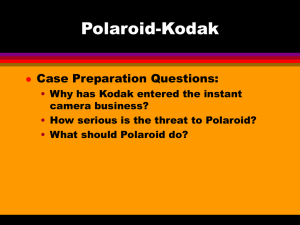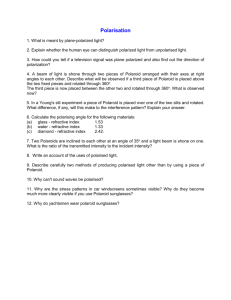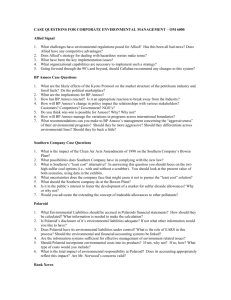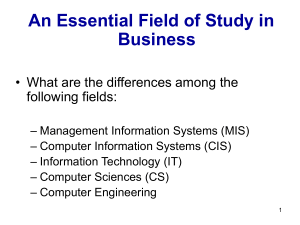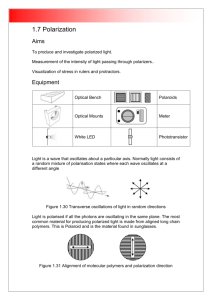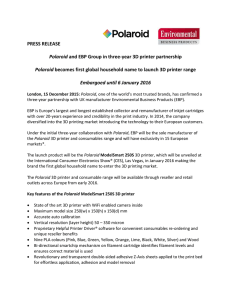投影片四(Powerpoint)
advertisement
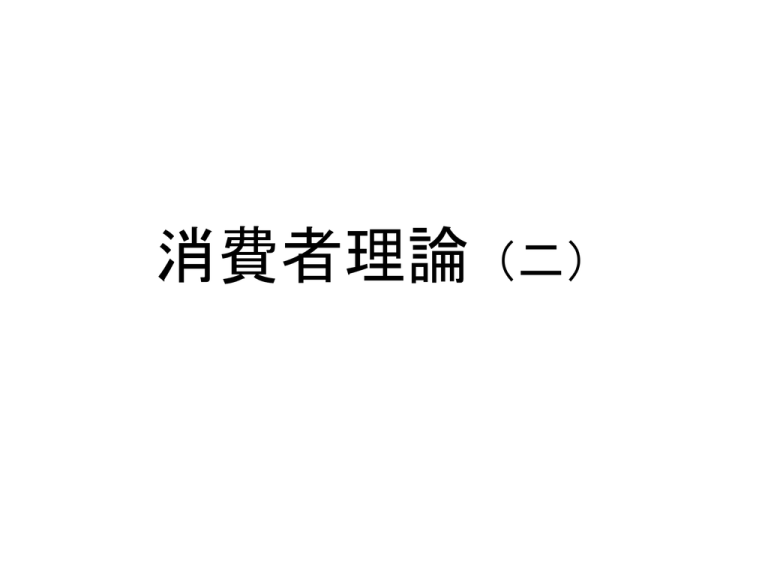
消費者理論(二) Polaroid vs Kodak • 拍立得相紙原為 Polaroid 公司的專利產 品,1963-1969 Kadak 曾經為 Polaroid 生產拍立得相紙。 • 當 Polaroid 決定自行生產拍立得相紙後 ,Kodak 於 1976 推出自有品牌的類似 的產品。 • 1986 年美國法院判定 Kodak 侵犯 Polaroid 專利,Kodak 須支付 Polaroid 四億五千萬美元的損害賠償,該賠償遠 低於 Polariod 所提出的 九十億美元的損 害賠償。 Kerry Decker: Polaroid vs Kodak Lawsuit (1986) http://youtu.be/bHKxg6exeGA QuickTime™ and a decompressor are needed to see this picture. Will Taxing Cigarettes Make Teenagers Stop Smoking? • Virtually all smoking begins in our population's youth and remains as a habit into those smokers' elder years. If we desire to halt smoking in its infancy, we should seek to deter and induce cessation in the youth years. It has been cited that taxation is an effective means to deter smoking at all ages, particularly efficacious in the youth population. Our results show that youth are quite responsive to price increases showing a decrease of 14 percent prevalence in smoking for a 10 percent increase in price; whereas, the adult population is relatively less responsive to such price changes, exhibiting nearly a 2 percent decrease in prevalence for a 10 percent increase in price. We conclude that taxation is an effective means of socially-enacted preventative medicine in deterring youth smoking. 需求彈性 • 彈性 (elasticity) 作為衡量反應力道的工 具。 • 當一個商品的價格上升時,該商品的需 求量會下降。有時我們想知道此需求量 下降對價格上升的反應有多強。需求的 價格彈性 (price elasticity of demand) 就 是用來衡量此需求量變動對價格變動的 敏感度。 需求的價格彈性 1 x ª › ®DŽq­‹ • % x ex p ª ×Æ ­Ê‹ • % p • 需求的價格彈性等於需求量變動的百分 比除以價格變動的百分比。 • 需求的價格彈性衡量價格每變動百分之 一,需求量變動百分之多少。 需求的價格彈性 x2 x1 x2 x1 x (x2 x1 ) / 2 x2 x1 x ex p p2 p1 p2 p1 p ( p2 p1 ) / 2 p2 p1 需求的價格彈性 2 x / x x p ex p / p p x • 需求的價格彈性與需求曲線的斜率有關 ,兩者都可以用來衡量需求量對價格變 動的反應程度,但需求曲線的斜率受價 格及需求量衡量單位的影響,需求的價 格彈性則與使用單位無關。 • 需求的價格彈性不考慮正負符號。 需求的價格彈性 3 • 當需求的價格彈性等於一,價格變動的 幅度與需求量變動的幅度相等,只是方 向相反。 • 由於消費的總支出等於價格乘以需求量 ,當價格變動的幅度與需求量變動的幅 度相等時,兩者對總支出的影響正好互 相抵消,所以總支出不受價格變動的影 響。 • 此時稱需求為單一彈性 (unit elastic) 需求在 a 點為單一彈性 需求的價格彈性 4 • 當需求的價格彈性大於一,需求量變動 的幅度大於價格變動的幅度,又當價格 上漲時,需求量下降。 • 需求量下降使總支出減少的力道大於價 格上漲使總支出增加的力道,總支出因 而減少。反之,當價格下跌時,總支出 反而增加。 • 此時稱需求為有彈性的 (elastic) 需求在 a 點為有彈性的 需求的價格彈性 5 • 當需求的價格彈性小於一,需求量變動 的幅度小於價格變動的幅度,又當價格 上漲時,需求量下降。 • 需求量下降使總支出減少的力道小於價 格上漲使總支出增加的力道,總支出因 而增加。反之,當價格下跌時,總支出 會減少。 • 此時稱需求為沒有彈性的 (inelastic) 需求在 a 點為沒有彈性的 直線需求曲線的彈性 完全彈性的需求曲線 完全無彈性的需求曲線 固定且單一彈性的需求曲線 影響彈性的因素 • 商品的性質 • 有無代替品 • 商品的支出佔消費者所得的比率 • 消費期間的長短 其他的需求彈性 • 除了價格外,其他影響需求量的因素包 括:消費者所得,其他相關商品價格。 • 所得彈性 (Income elasticity): 需求的所 得彈性等於需求量變動的百分比除以所 得變動的百分比。 • 交叉彈性 (cross elasticity): 需求的交叉 彈性等於需求量變動的百分比除以其他 商品價格變動的百分比。 需求的所得彈性 1 x ª› ®DŽq­‹ • % x em m ©“±o­‹ • % m • 需求的所得彈性衡量所得每變動百分之 一,需求量變動百分之多少。 需求的所得彈性 2 • e > 0,正常財 (normal good) • e < 0,劣等財 (normal good) • 0 < e < 1,必需品 (necessity good) • e > 1,奢侈品 (superior good or luxury) • e = 0,(sticky good) m m m m m 需求的交叉彈性 x ª › ®DŽq­‹ • % x exy ®‰ •L ” ´~ª ×Æ ­Ê‹ • % py py • 需求的交叉彈性衡量其他商品價格每變 動百分之一,需求量變動百分之多少。 •e < 0,商品 X 與商品 Y 為互補商品 (complements) xy •e > 0,商品 X 與商品 Y 為替代商品 (substitutes) xy Polaroid vs Kodak: Fact 1 • The explosive growth in instant camera sales between 1976 and 1979 was mainly attributable to: 1. fall in price resulting from the competition. or 2. Kodak’s good reputation. • In the first case, court need to accurate estimates of the price elasticity of demand. • Polaroid might actually have benefited Polaroid vs Kodak: Fact 2 • After 1980, instant camera and film sales began to drop sharply. • Prices of 35mm cameras, film, developing, and printing all began to fall significantly in 1980. • On this issue, the cross elasticity of demand between instant and 35mm cameras and film was crucial to the explanation of the sharp drop of the instant camera and film sales. Polaroid vs Kodak: Fact 3 • Polaroid at one point claimed that Kodak was obligated to pay it $9 billion or more • Kodak claimed that it owed Polaroid something in the neighborhood of $450 million. • The judge’s verdict came out with a number very close to Kodak’s figure.
